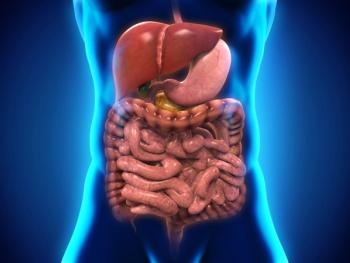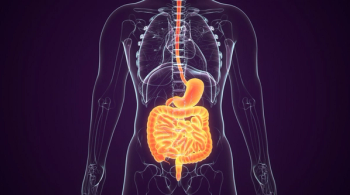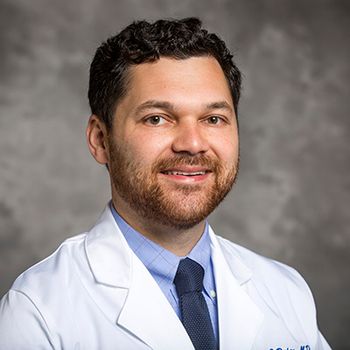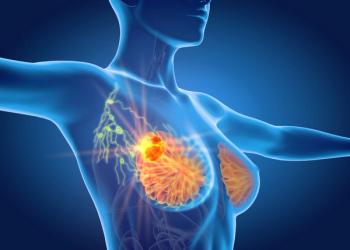
T-DXd Elicits Encouraging Clinical Benefits in HER2-Mutated Solid Tumors
Trastuzumab deruxtecan produces enduring responses among patients with HER2-mutated solid tumors in the phase 2 DESTINY-PanTumor01 trial.
Treatment with fam-trastuzumab deruxtecan-nxki (Enhertu; T-DXd) led to clinically meaningful outcomes in patients with HER2-mutated solid tumors, according to primary findings from the phase 2 DESTINY-PanTumor01 trial presented at the
At a median follow-up of 8.64 months (range, 1.5-22.1), the confirmed best objective response rate (ORR) by independent central review (ICR) with the antibody-drug conjugate (ADC) was 29.4% (95% CI, 20.8%-39.3%) and the median duration of response (DOR) by ICR was not yet reached in all patients treated (n = 102). Notably, 54.2% of responders remained in response at 18 months.
The median progression-free survival (PFS) by ICR was 5.4 months (95% CI, 2.7-7.1), with 60% maturity; the median overall survival (OS) was 10.9 months (95% CI, 8.3-14.9), with 57% maturity.
“The DESTINY-PanTumor01 study showed clinically meaningful pan-tumor activity of T-DXd in patients with a broad range of prespecified HER2 mutations in solid tumors, beyond lung cancers,” according to lead study author, Bob T. Li, MD, PhD, MPH. “In this heavily pretreated patient population, T-DXd demonstrated encouraging antitumor activity, and durable responses across multiple tumor types with HER2 mutations.”
Li is a medical oncologist and physician-scientist; physician ambassador to China and Asia-Pacific at the Bobst International Center; co-director of the Thoracic Liquid Biopsy Program; and chief scientific officer at Memorial Sloan Kettering Cancer Center, in New York, New York.
In August 2022, T-DXd was granted accelerated approval by the FDA for the treatment of adult patients with unresectable or metastatic non–small cell lung cancer (NSCLC) who have received prior systemic therapy, and whose disease harbors activating HER2 mutations.2 Although the ADC has also been approved by the regulatory agency for adult patients with unresectable or metastatic HER2-positive breast cancer3 and those with locally advanced or metastatic HER2-positive gastric or gastroesophageal junction (GEJ) adenocarcinoma4, treatment options remain limited for those with solid tumors harboring HER2 mutations.
It is known that certain HER2 mutations may elicit constitutive HER2 signaling and encourage oncogenesis, according to Li, who underscored that additional effective HER2-targeted therapies are needed. Previous data from a phase 1 trial (NCT02564900) indicated that T-DXd had early activity in patients with solid tumors harboring these mutations, eliciting a confirmed response rate of 47.4% (n = 9/19).5
The global, multicenter, multicohort, open-label DESTINY-PanTumor01 trial enrolled patients with unresectable and/or metastatic solid tumors harboring HER2 mutations who have progressed after previous therapy or who have no satisfactory alternative options. Patients were allowed to have previously received HER2-targeted therapy.
Patients with HER2-positive breast, gastric, or GEJ cancers, as well as those with HER2-mutant NSCLC, were excluded. Patients could not have a history of noninfectious interstitial lung disease (ILD) or pneumonitis, current ILD, or suspected ILD that could not be ruled out by imaging at screening.
Participants were treated with 5.4 mg/kg of intravenous T-DXd once every 3 weeks.
The primary end point of the phase 2 trial is confirmed ORR by ICR and key secondary end points include DOR, disease control rate, confirmed ORR by investigator assessment, PFS, OS, safety, and tolerability.
Investigators had a target enrollment of approximately 100 patients, with a maximum of 20 patients per each tumor type.
A total of 131 patients were enrolled to the trial and 102 patients received treatment. At the data cutoff date of January 25, 2023, 14.7% of patients were still receiving treatment with T-DXd. Among those who discontinued treatment with the ADC, the most common reason was objective disease progression (61.8%), followed by toxicity (61.8%), other (9.8%), and subjective disease progression (4.9%). The median number of treatment cycles received was 5 (range, 1-29).
The median age of patients treated was 66.5 years (36-84). Most patients were female (60.8%) and half of patients were White. The median number of prior regimens received was 3 (range, 1-13), with 14.7% of patients receiving 1 prior line, 28.4% receiving 2 lines, and 56.9% receiving 3 or more lines. Moreover, 17.6% of patients received prior HER2-targeted therapy. Regarding ECOG performance status, 43.1% had a status of 0, 55.9% had a status of 1, and 1.0% had a status of 2. Notably, HER2 expression levels ranged from IHC 3+ (9.8%), IHC 2+ (20.6%), IHC 1+ (5.9%), and IHC 0 (36.3%); 27.5% had unknown status.
Patients included in the study had breast cancer (19.6%), colorectal cancer (19.6%), biliary tract cancer (18.6%), esophagogastric cancer (8.8%), urothelial cancer (6.9%), salivary gland/head and neck adenocarcinoma (5.9%), small intestinal adenocarcinoma (4.9%), cervical cancer (2.9%), endometrial cancer (2.0%), esophageal (2.0%), other neuroendocrine cancers (2.0%), pancreatic cancer (2.0%), adenocarcinoma of unknown primary (1.0%), extramammary Pagel disease (1.0%), melanoma (1.0%), ovarian cancer (1.0%), and urachal cancer (1.0%).
The HER2 mutation domain in patients included kinase (51.0%), extracellular (33.3%), and transmembrane/juxtamembrane (16.7%).
Regarding safety, 77.5% of patients experienced any-grade drug-related treatment-emergent adverse effects (TEAEs); 25.5% of these effects were grade 3 or higher. Moreover, 9.8% of patients experienced serious drug-related TEAEs. Additionally, drug-related TEAEs resulted in dose reductions and interruptions in 12.7% and 14.7% of patients, respectively; 7.8% of experienced a drug-related TEAE that resulted in treatment discontinuation. Two patients experienced drug-related TEAEs that led to death.
The most common drug-related TEAEs experienced by more than 10% of patients were nausea (any grade, 38.2% grade ≥3, 2.0%), fatigue (24.5%; 1.0%), diarrhea (22.5%; 2.0%), alopecia (16.7%; 0%), anemia (14.7%; 4.9%), decreased appetite (13.7%; 0%), decreased neutrophil count (12.7%; 6.9%), asthenia (11.8%; 2.9%), and vomiting (10.8%; 0%).
ILD/pneumonitis was a TEAE of special interest, and this occurred at any grade in 10.8% of patients. Specifically, 2.9% of patients experienced grade 1 ILD/pneumonitis, 4.9% had a grade 2 event, 1.0% had a grade 3 event, and 2.0% had a grade 5 event. Another TEAE of special interest was left ventricular ejection fraction decrease; this occurred in 2.9% of patients and was grade 2 in severity.
“Responses were observed across HER2 protein expression levels, including HER2-low or HER2-zero expression, suggesting that hopefully mutation and expression are independent biomarkers of response to T-DXd,” Li said. “The safety signals seen here are consistent with the established safety profile of this drug.”
Based on these data, further research is warranted to better define which patients with HER2 mutations may derive the greatest benefit from the ADC, he concluded.
References
- Li BT, Meric-Bernstam F, Bardia A, et al. Efficacy and safety of trastuzumab deruxtecan (T-DXd) in patients (pts) with solid tumors harboring specific HER2-activating mutations (HER2m): Primary results from the international phase II DESTINY-PanTumor01 (DPT-01) study. Ann Oncol. 2023;34(suppl 2):S459-S460. doi:10.1016/j.annonc.2023.09.1840
- FDA grants accelerated approval to fam-trastuzumab deruxtecan-nxki for HER2-mutant non-small cell lung cancer. News release. FDA. August 11, 2022. Accessed October 22, 2023. https://www.fda.gov/drugs/resources-information-approved-drugs/fda-grants-accelerated-approval-fam-trastuzumab-deruxtecan-nxki-her2-mutant-non-small-cell-lung
- FDA grants regular approval to fam-trastuzumab deruxtecan-nxki for breast cancer. FDA. May 4, 2022. Accessed October 22, 2023. https://www.fda.gov/drugs/resources-information-approved-drugs/fda-grants-regular-approval-fam-trastuzumab-deruxtecan-nxki-breast-cancer
- FDA approves fam-trastuzumab deruxtecan-nxki for HER2-positive gastric adenocarcinomas. FDA. January 15, 2021. Accessed January 15, 2021. https://www.fda.gov/drugs/resources-information-approved-drugs/fda-approves-fam-trastuzumab-deruxtecan-nxki-her2-positive-gastric-adenocarcinomas
- Tsurutani J, Iwata H, Krop I, et al. Targetings HER2 with trastuzumab deruxtecan: a dose-expansion, phase I study in multiple advanced solid tumors. Cancer Discov. 2020;10(5):688-701. doi:10.1158/2159-8290.CD-19-1014
Newsletter
Stay up to date on recent advances in the multidisciplinary approach to cancer.
















































































